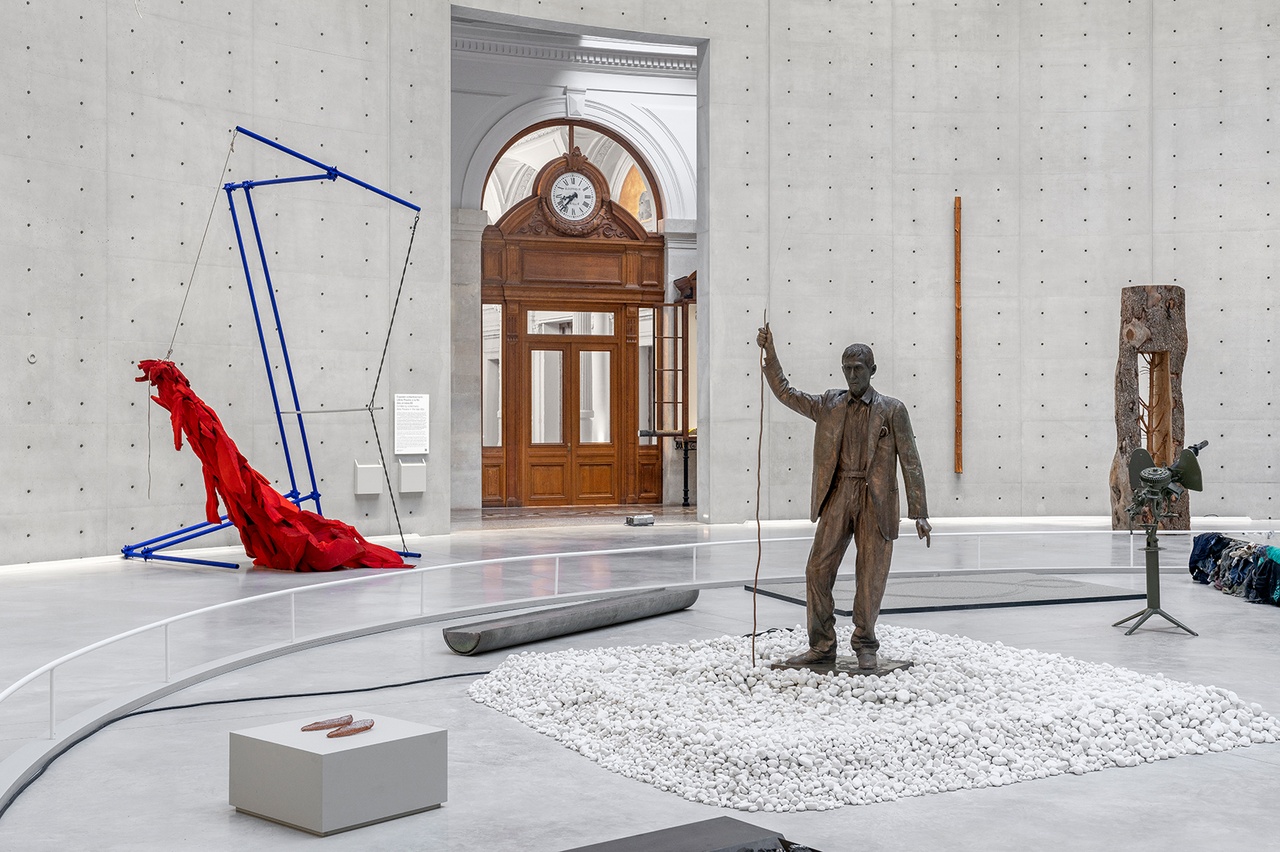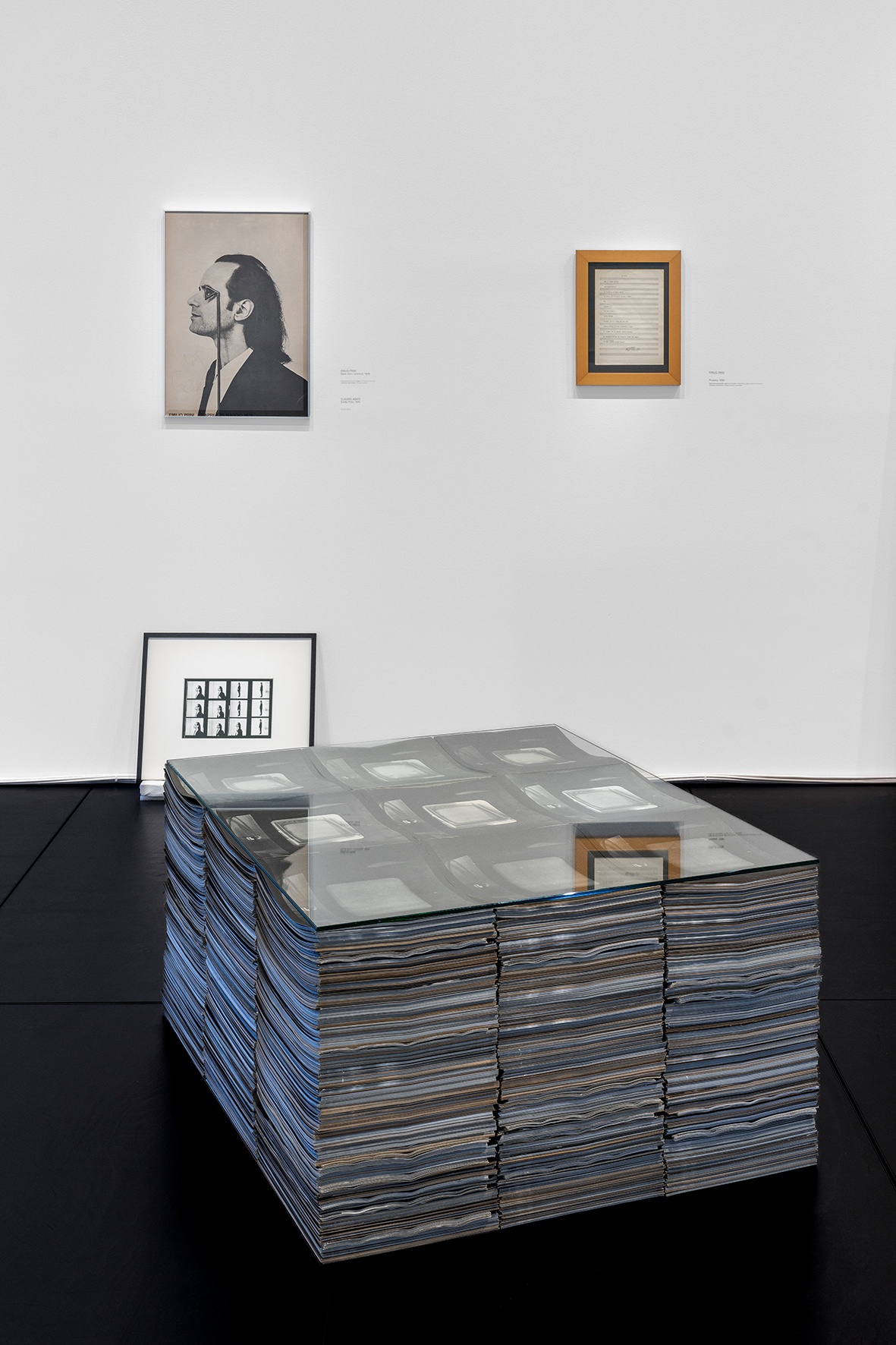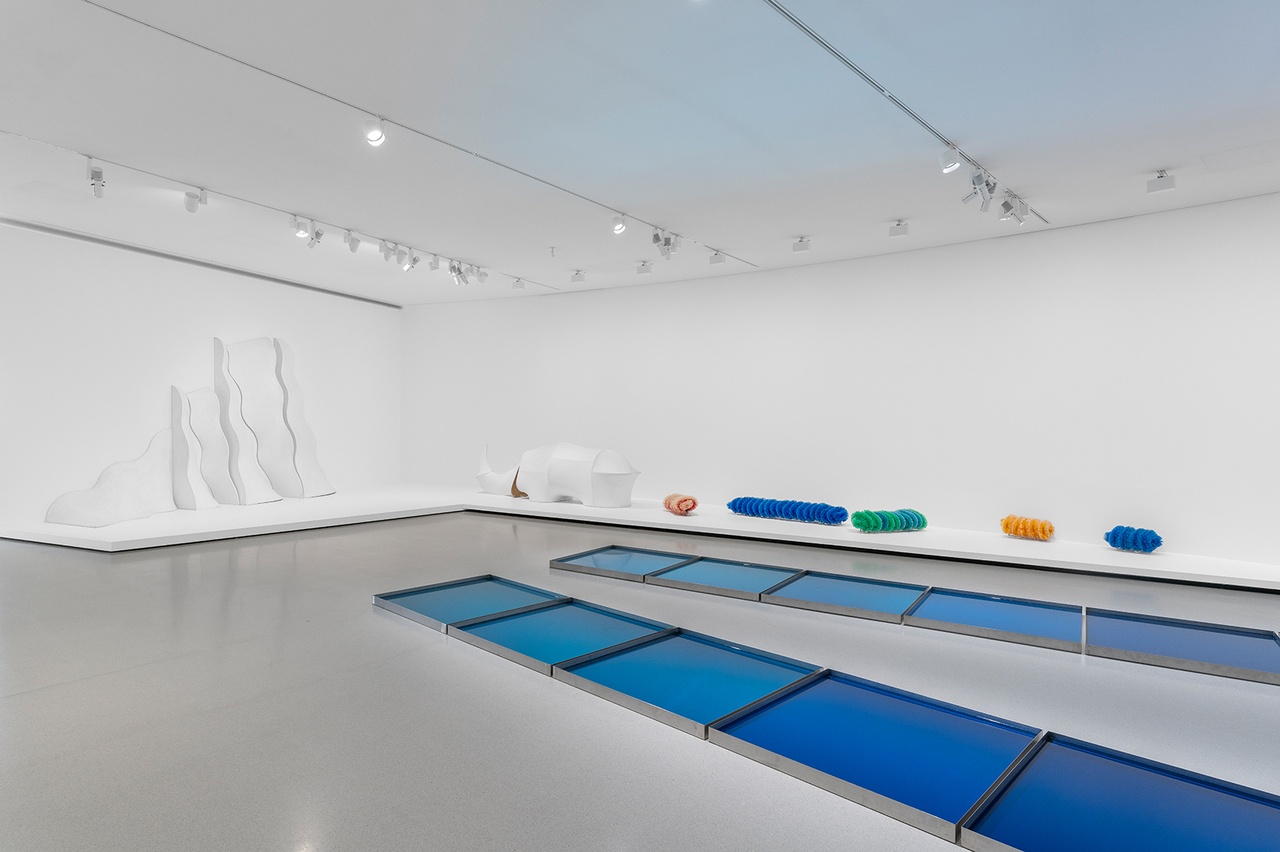ARTE IN ABBONDANZA Erik Verhagen on “Arte Povera” at the Bourse de Commerce, Paris

“Arte Povera,” Bourse de Commerce, Paris, 2024–25
In a lecture he gave last November as part of a seminar at the Sorbonne, the artist Victor Burgin commented wryly on the fact that the Pinault Collection has ended up at the Bourse de Commerce, the historical premises that formerly housed the French stock exchange. For the umpteenth time, Burgin sang the familiar tune about the complicated relationship between contemporary art and big money. It reminded me of what Lucy R. Lippard noted resignedly in the early 1970s, in the palinodic postface to her book Six Years: “whatever minor revolutions in communication have been achieved by the process of dematerializing the object […], art and artist in a capitalist society remain luxuries.” [1] Arte Povera features in her book, of course, and many of the works and events she describes are shown or cited in the exhibition “Arte Povera” at the Bourse de Commerce, curated by Carolyn Christov-Bakargiev, who – after an intensive engagement with the movement – took on the mantle of preserving its legacy after the death of its founder, Germano Celant, in 2020.

“Arte Povera,” Bourse de Commerce, Paris, 2024–25
It is an ambitious project, no doubt. Today, dedicating a large-scale retrospective to the Italian art movement is a risky undertaking, as museum security standards and the fragility of the works, not to mention their insurance values, make it impossible to present certain pieces. The chorus of alarm bells during the press opening (which was less prevalent but still discernible on a second visit), the numerous security ropes surrounding groups of works, and the “Do Not Cross” signs all reflect the difficulty of presenting works in a standardized institutional context when the aim of the movement, lest we forget, was to emancipate art from the straitjacket of galleries and museums. Rereading Celant’s essays from the late 1960s, in particular the epilogue to his book Arte Povera, which was published by Gabriele Mazzotta in 1969, [2] is a painful exercise in this respect. Paradoxically, Celant was the first to contribute to Arte Povera’s patrimonialization and its commercial success through the exhibitions he curated, most prominently “The Italian Metamorphosis, 1943–1968” shown at the Guggenheim Museum in 1994, and via a range of essays and books.
It seems a cliché to say that retrospectives of the various related branches of conceptual art are fraught with inextricable pitfalls. How can works whose initial ambition was to escape all forms of fetishism and aura be presented in spectacular exhibition settings today? Aren’t such undertakings almost doomed to fail? There are ways to soften the blow with a little more subtlety than Christov-Bakargiev demonstrated in this exhibition. One option would have been to play the frugality game and be more selective to allow for a less dense distribution of works. It can be assumed that “big money” has contributed to the exhibition being as crammed as it is: indeed, the first impression is that the excessive resources at the curator’s disposal tempted her to borrow too many coveted pieces while at the same time having to include the collection of the “big boss,” François Pinault, who tends to exhibit his treasures with pride. No public institution with a limited budget would be able to display such a wealth of works. There is plenty of room available at the Bourse, which – for the first time in its history as an exhibition space – is dedicated entirely to one single movement. But unfortunately, the opportunity to use the spacious venue well was missed.

“Arte Povera,” Bourse de Commerce, Paris, 2024–25
Introduced by a kind of “documentary” anteroom, the exhibition encompasses various thematic and monographic showcases that encircle the central rotunda as the show’s core. While the latter appears comparatively airy, the smaller spaces on the lower floors and in the upper galleries are packed with pieces. They are dedicated to 13 historical figures, each of whom played a formative role in the movement: Giovanni Anselmo, Alighiero Boetti, Pier Paolo Calzolari, Luciano Fabro, Jannis Kounellis, Mario and Marisa Merz, Giulio Paolini, Pino Pascali, Giuseppe Penone, Michelangelo Pistoletto, Emilio Prini, and Gilberto Zorio. Some of them fare relatively well. In a small room allocated to him on the lower level, Prini, for example, is represented with a relevant and varied selection of works from his still largely underestimated oeuvre, which focused on the themes of reproduction and reality through his exploration with the means of the photographic apparatus. His projects often pushed technical devices to the limit: in one, he documented his surroundings compulsively until his camera was worn out. Pascali enjoys one of the rare airy presentations, despite an unfortunate scenography that elevates his works by way of a conspicuous plinth, which runs counter to their elegant modesty. Paolini, who provided the exhibition design for his presentation himself, achieved a measured installation appropriate to the space provided. The other monographic rooms are crowded with works, sometimes giving the impression of a warehouse or a fair booth, with no space to breathe and no possibility for the spectators to move around the exhibits. This is exacerbated by the numerous distancing devices that hinder interaction and thus neutralize much of the energy these pieces once possessed. As stated in the catalogue, in the spirit of Arte Povera, “an artwork is a place – what Luciano Fabro called a habitat, where the audience becomes alert, aware of their embodied perceptions and whole beings for the time of the installation.” [3] This “phenomenological reduction of the experience of oneself” [4] in a given space and time is compromised at the Bourse. While it would have been worthwhile to concentrate on a presentation of the work that does justice to the philosophy of its makers, the curators added contemporary counterpoints to highlight the movement’s enduring legacy. The interspersed positions, for example those of Jimmie Durham and Theaster Gates, are interesting as such, but I do not see the beneficial effect of including them in this exhibition. To me, they rather contribute to its overload.
“Qui trop embrasse mal étreint” (roughly, much wants more and loses all), a French proverb goes, and it’s clear that the cause of Arte Povera is ill-served by this overzealous presentation and by the constricted way in which the visitor is led through the exhibition, occasionally left with a feeling of indigestion. In Boetti’s saturated room, for example, the historic works Scala, Sedia, 8,50 (Zig-Zag), Mancorrente m.2, Lampada annuale and Catasta – canonical sculptures dating from 1966 and 1967 and early examples of the artist’s exploration of repetition, craft, and time – share a space of not even 20 square meters. These works were first shown at the artist’s solo exhibition at the Christian Stein gallery in Turin in January 1967, where they attracted great public attention. Here in Paris, it seems impossible to engage with them. At least Boetti’s postcard Gemini (1968) is adequately shown in an interstitial space.

“Arte Povera,” Bourse de Commerce, Paris, 2024–25
There is no doubt that the presentation at the Bourse de Commerce includes exceptional works, many of which are central to Arte Povera and its origins. A number of horizontal pieces, such as Anselmo’s* Direzione* (1967), Kounellis’s Senza titolo (1967), Fabro’s Lo Spirato (1968–73) or Pascali’s Confluenze (1967), exemplify the movement’s aspiration to defy verticality and modernist pictorial authority. They are placed programmatically on the ground, compiled by a curator whose extensive knowledge on the material is demonstrated and shared in a series of display cabinets, filled with documents, mainly books and photographs, that explain and exemplify the perspectives, angles, implications, digressions, themes and sub-themes of Arte Povera. One could spend hours taking it all in, then prolong this infectious pleasure by leafing through the extensive exhibition catalogue. But the more one reads, the more one regrets the fact that the show missed the opportunity to convey the true spirit of this artistic venture, which from the beginning was meant to be open to the world. The archive material highlights that this is not the first time that these works have been shown under conditions that are anything but ideal. The presentation at the Deposito d’Arte Presente in Turin in 1968, for example, was extremely full, too, but far less organized and secured; the historical installation views give the impression of a joyful mess. Back then, the art was still accessible and alive and not, as today, either on life support or already immersed in institutional formaldehyde. Withering. Flaccid. Devitalized. The disappointing sight of important works such as Boetti’s Io che prendo il sole a Torino il 19 gennaio 1969 (1969) or Pascali’s Mitragliatrice (1965) hedged in a safe zone like animals in a cage at the Bourse’s central rotunda demonstrates what Arte Povera no longer is. And perhaps, as the exhibited archive material suggests, what it never really managed to be in the first place.
“Arte Povera,” Bourse de Commerce, Paris, October 9, 2024–January 20, 2025.
Erik Verhagen is a professor of art history at the Université de Lille, France, as well an independent curator and art critic.
Translated by Laurie Hurwitz
Image credit: © Nicolas Brasseur / Pinault Collection
Notes
| [1] | Lucy R. Lippard, Six Years: The Dematerialization of the Art Object from 1966 to 1972 […] (New York: Praeger Publishers, 1973), 263. |
| [2] | Germano Celant, Arte Povera (Milan: Gabriele Mazzotta, 1969). |
| [3] | Carolyn Christov-Bakargiev, ed., Arte Povera (Paris: Pinault Collection, 2024), 121. |
| [4] | Ibid. |
